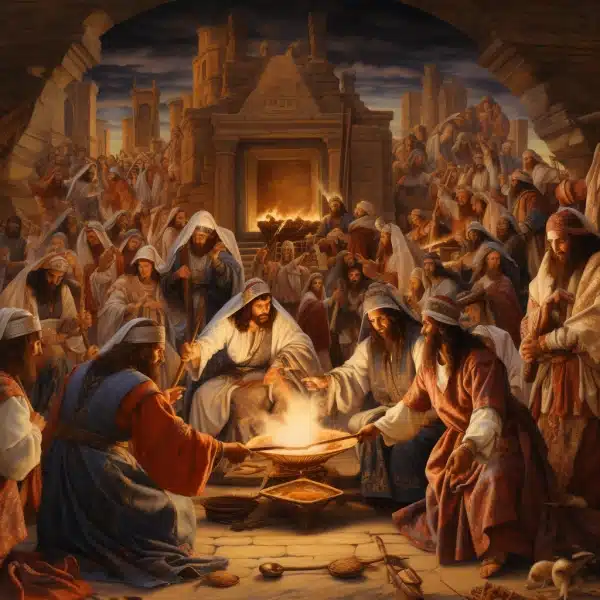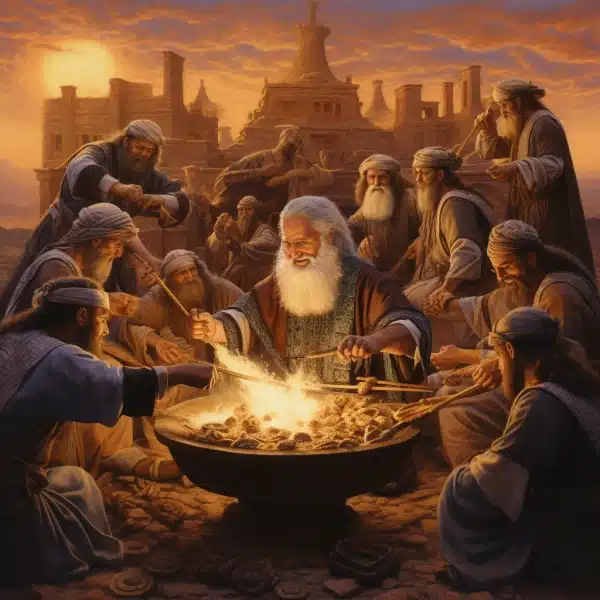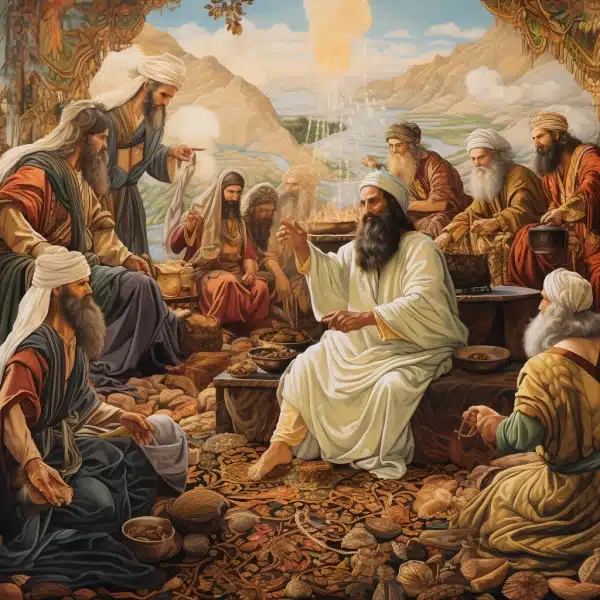
The Cultural Tapestry: Old Testament Rituals
Religious rituals preserve generations-old traditions and shape a society’s culture. The Old Testament rituals demonstrate ancient Israelites’ strong faith in God and devotion to worship. This article will examine the cultural importance of these rituals in religious practices and community life.
Key Takeaways:
- The Old Testament rituals were sacred symbols of God’s love and mercy.
- These rituals aimed to purify the community and maintain God’s presence.
- Jesus’ death fulfilled the symbolic meaning of the Old Testament rituals.
- Studying these rituals provides insights into our own cultural heritage.
- Comparative studies with ancient Egyptian rites shed light on the cultural context.

Ancient Rituals in the Old Testament and Beyond
Ancient Israelite ceremonial traditions and religious ceremonies are documented in the Old Testament. The people practiced these rites daily and they were historically significant. The ceremonies covered everything from birth to death, illness to healing, holidays to sacrifice.
The Old Testament rituals assist us understand our cultural background and modern rituals. Studying these ancient behaviors helps us comprehend their historical significance and influence on modern activities. For instance, Israelite purification and renewal traditions predated baptism and spiritual cleaning.
To illustrate the breadth and depth of the Old Testament rituals, let’s take a closer look at their various aspects:
Table: Aspects of Old Testament Rituals
| Aspect | Examples |
|---|---|
| Birth and Naming | Circumcision, dedication |
| Death and Mourning | Burial, mourning practices |
| Illness and Healing | Offerings, prayers |
| Holidays and Festivals | Passover, Feast of Tabernacles |
| Ambition and Sacrifice | Offerings, vows |
| Cleanliness and Purity | Ritual washings, dietary laws |
These rites were unique to the Israelites and influenced by adjacent cultures. Comparative research have shown connections between Old Testament and ancient Egyptian ceremonies, shedding light on Israelite culture. These linkages help us comprehend the Old Testament rites’ historical importance and role in ancient Near Eastern culture.
“The Old Testament is a treasure trove of ancient customs and religious rituals, providing us with a window into the beliefs and practices of the Israelite culture.” – Dr. Sarah Cohen, Religious Studies Professor
By studying Old Testament rites, we can better understand ancient traditions and how they affected people. These activities impact spirituality, culture, and human experience over time. By studying the history of these rituals, we can better understand our own behaviors and connect with our shared human past.
Connections to Egyptian Temple Worship and Rituals
Comparative studies have looked at how religious worship in the Old Testament is similar to worship in nearby cultures, like ancient Egypt. While being careful not to overstate how one tradition affected another, comparative studies can shed light on related ideas and the cultural background of Old Testament behaviors.
The study of early ancient Egyptian rituals has shown that temple religion and worship practices were similar. This has helped us understand the cultural background of Old Testament rituals. The religion of the ancient Egyptians was very complicated and focused on temples. The gods lived in these temples, which were also holy places.
Rituals from ancient Egypt and the Old Testament stress how pure and clean something is. Both groups believed that ritual hygiene was a way to connect with God. In the Old Testament, entering the temple for prayer meant going through ceremonies and practices that cleansed the spirit.
| Ancient Egyptian Rituals | Old Testament Rituals |
|---|---|
| Highly structured and hierarchical | Regulated by Mosaic law |
| Included offerings and sacrifices | Offerings and sacrifices for atonement and thanksgiving |
| Performed by priests and priestesses | Performed by the high priest and Levitical priests |
| Focus on maintaining cosmic order (maat) | Focus on maintaining covenant relationship with God |
We can learn more about the cultural and historical background of Old Testament rites by comparing them to ancient Egyptian religious programs and stories in the Bible about the early patriarchs. Even though different cultures share some things, they each have their own religious views and traditions. But looking at these connections might help us understand the cultural setting of the ceremonies in the Old Testament.

Conclusion
Old Testament rituals had a big impact on the religious and cultural practices of the ancient Israelites. These rites symbolized God’s love, kindness, and forgiveness while emphasizing sin’s penalties and repentance.
These ceremonies cleansed and renewed the society and temple and allowed God to be with his people without compromising divine justice. With Jesus’ death as the ultimate sacrifice, Old Testament traditions are linked to the New Testament.
These ancient customs still matter today. By studying Old Testament rituals’ cultural importance, we can better grasp biblical customs and their symbolism in modern religion.
The rich cultural heritage and traditions of the Old Testament can be appreciated by studying them. This investigation lets us examine our own practices and their origins, acknowledging their tremendous impact on society in the past and now.
FAQ
What is the cultural significance of Old Testament rituals?
Old Testament rituals had significant cultural importance in ancient Israelite culture, symbolizing God’s love and mercy, providing purification for the community and temple, and allowing God’s presence with his people without compromising divine justice.
How did the Old Testament rituals connect to the New Testament?
The Old Testament rituals have a connection to the New Testament, with Jesus’ death being described as a sacrifice that accomplished atonement, fulfilling the symbolic meaning of the Old Testament rituals.
What role did rituals play in ancient Israelite culture?
Rituals played a vital role in the lives of the Israelites, encompassing various aspects such as birth, death, illness, holidays, and cleanliness. These rituals were highly symbolic and represented the feelings and needs of the people at that time.
Have there been comparative studies on the Old Testament rituals and ancient Egyptian rites?
Comparative studies have been conducted to explore the connections between the Old Testament rituals and the rituals of neighboring cultures, including ancient Egypt. These studies shed light on the cultural context and similarities between the two traditions.
What is the present-day relevance of the Old Testament rituals?
The ancient traditions of Old Testament rituals continue to have present-day implications, offering insights into our own cultural practices and religious symbolism.
